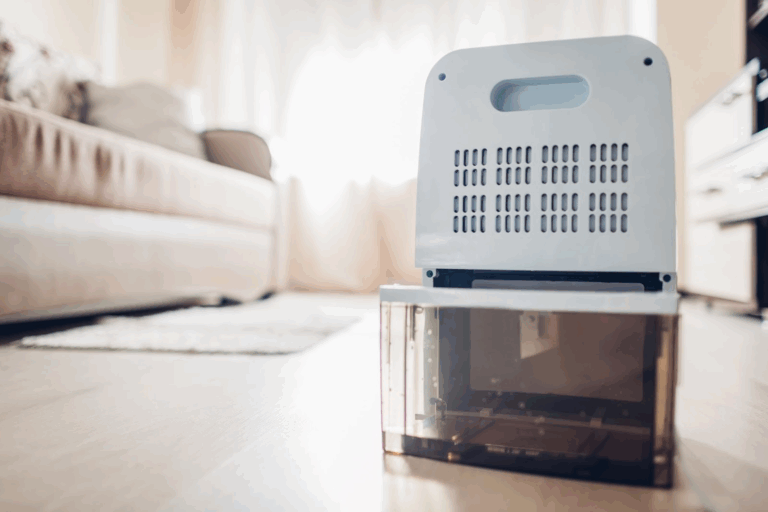If you live in Connecticut, the answer is most likely yes.
Here in New England, our basements are especially known for being poorly ventilated and excessively damp due to heavy precipitation and high humidity levels throughout the year.
In addition, many older homes in the area have endured decades and even centuries of seasonal freezing and thawing cycles, which can cause structural shifts and lead to cracks in their original stone and brick foundations.
The bottom line? Your Connecticut home is likely more humid than you think—which can cause big problems for your property and your health.
Why indoor humidity matters
Humidity refers to the amount of water vapor in the air, and higher-than-average humidity levels indoors can be detrimental for several reasons.
Excess moisture inside your home can cause:
- Paint and wallpaper to peel and bubble
- Wood to warp and rot, especially around window panes
- Structural damage that is often expensive to repair
- Damage to electronics and other equipment
- Unwanted insects and other pests
But one of the biggest dangers of high indoor humidity is mold growth.
Mold is a type of fungi that thrives on moisture and will grow anywhere it can find wet or humid conditions. In addition to eating away at organic materials such as wood and drywall, mold can trigger allergy symptoms and other health problems in humans and pets. If the humidity level in your home is higher than normal, you may want to keep an eye out for mold growth—here’s what to look for.
According to the EPA, you should aim to keep indoor humidity between 30 and 50 percent. A digital humidity meter, which you can find online or at your local hardware store, is a simple way to measure the moisture level in your home.
What does a dehumidifier do?
One of the things EPA experts recommend to keep indoor humidity within the ideal range is using a dehumidifier. Dehumidifiers remove excess moisture from the air and create drier air within your home. They do this by drawing in the warm, moist air and converting it into condensation.
If your home dehumidifier is a portable unit, the condensation that is collected will drain into a container that will need to be emptied periodically. To make things easier, you can install a whole-house dehumidifier, which channels the condensation out of your home through a pipe or designated drain line.
Why install a whole-house dehumidifier?
From winter storms and spring snowmelt to a recent trend of increasingly muggy summers, New England homeowners are no strangers to humidity. Especially if you live in an older residential home prone to damp conditions, installing a whole-house dehumidifier can be a smart move.
When compared with portable units, whole-house units offer the following benefits:
- Less maintenance
- Longer lifespan
- Quieter operation
- Works throughout the house
- More efficient than single units
Ask CT Mold Pros about improving indoor humidity.
The experts at CT Mold Pros are dedicated to creating safe and healthy living environments for Connecticut families. In addition to mold remediation, storm damage restoration, and mold testing, we offer several solutions to improve the indoor air quality of your home—including the installation of whole-house dehumidifier units.
If you recently experienced water damage or are concerned about indoor humidity and mold growth, call us at (203) 920-0265 today for a free estimate or fill out our online form with your message and a member of our rock-star team will respond shortly. In the meantime, check out some of our recent projects!





.svg)
